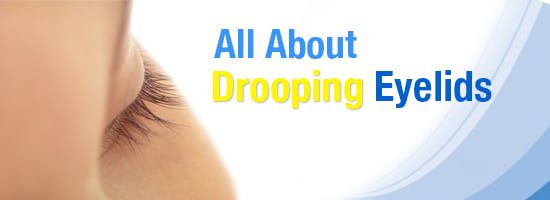Drooping eyelids, also known as ptosis, can affect one or both eyes. It also varies in severity—it can be slight or cause the eyelid to cover the whole eye and block all vision. Drooping eyelids can be inherited or develop later in life, and can be caused by muscle weakness, loose skin, or nerve damage. If drooping eyelids are present it birth, the condition is referred to as congenital ptosis.
Symptoms
The main symptom of ptosis is drooping eyelids. Often, that is the only symptom that is present. However, sometimes ptosis can be accompanied by watery eyes and discomfort. Drooping eyelids can be an isolated condition or appear as a secondary condition alongside eyelid tumors, abnormal eye movements, refractive errors, neurological disorders, and muscular diseases. Evaluating the eye and testing for possible underlying conditions will likely be part of the diagnostic process.
Treatment
The best treatment for drooping eyelids depends on the underlying cause of the condition, its severity, and the child’s age. Without any treatment, vision development can be affected and amblyopia (lazy eye) can occur. A doctor will observe to determine the best treatment plan. In most cases, surgery is needed, which can involve tightening the muscles (levators) that lift the eyelid. However, some conditions that can contribute to eyelid drooping can be corrected with medications.
If drooping eyelids are present at birth, they may need to be surgically corrected right away to allow for normal vision development. If the drooping is minor and vision development is not a concern, the surgery may be delayed until the child is four or five years old, when eyelids and the surrounding tissues are stronger and more developed. The procedure to correct drooping eyelids is usually successful, but the eyelids are not always symmetrical following the surgery.



